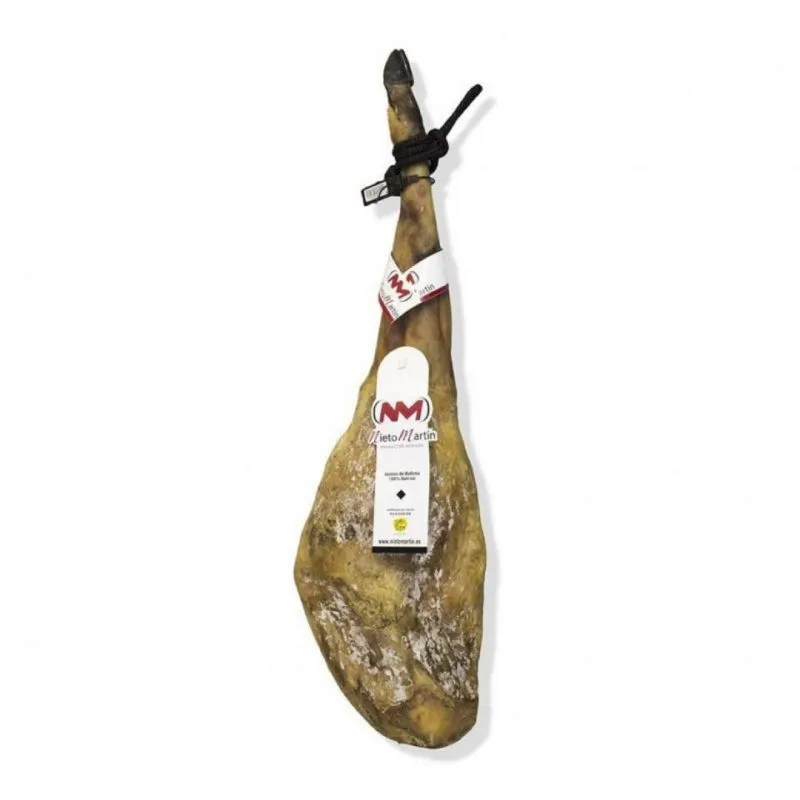The Serrano ham leg, a delicacy highly appreciated in many cultures, sometimes develops mold, which raises concerns and questions among consumers. In this article, we will address all your concerns about mold on ham, from its causes to how to manage and prevent it.
Mold on serrano ham: Why Does Ham Develop Mold?
Ham is a product that undergoes a meticulous maturation and curing process. Mold on ham is primarily due to exposure to the natural environment during this maturation process. As the ham ages, the moisture content and temperature variations create ideal conditions for mold to form on its surface.
The Different Types of Mold on Ham
1. White mold on Ham:
– Appearance: White and powdery.
– Cause: Usually appears during the curing process.
– Benefit/Drawback: Generally harmless and can contribute to flavor development.
2. Green mold on serrano ham:
– Appearance: Green and fuzzy.
– Cause: Occurs due to prolonged exposure to moisture.
– Benefit/Drawback: Indicates prolonged exposure to moisture, can negatively affect flavor if not controlled.
3. Blue mold on serrano ham (Penicillium):
– Appearance: Blue-green and velvety.
– Cause: Develops in humid environments.
– Benefit/Drawback: Common in cured meats, can enhance flavor but excessive growth is undesirable.
4. Black mold on Ham with black mold:
– Appearance: Dark green to black.
– Cause: Result of prolonged humidity and lack of air circulation.
– Benefit/Drawback: Generally harmless but can negatively alter flavor in large quantities.
Can I Buy Iberian Ham with Mold?
Like Serrano ham, mold on Iberico ham develops in the same way. It is common to find mold on Iberian ham, especially during the curing process. Identifying if the mold is acceptable involves examining its type, amount, and distribution.
How to Identify Mold on cured Ham:
– Observe white or green fuzzy spots.
– Evaluate the extent of mold coverage.
– Determine if the ham smells musty or has an unpleasant odor.
How to Remove Mold from Ham:
– Gently clean the affected area with a cloth soaked in vinegar or white wine.
– Ensure the ham is dry and apply a light layer of olive oil to prevent mold from regrowing.
How to Store Ham to Prevent Mold:
– Store in a cool, dry place with good ventilation.
– Place the ham resting on the hip bone so air circulates on all sides.
– Use a ham cover or breathable cloth to protect it from dust and excess moisture.
– Regularly inspect and clean the ham to prevent mold formation.
Frequently Asked Questions about Mold on Ham
1. Does mold on ham mean it is spoiled?
– Not necessarily. Mold on ham is usually harmless or even beneficial, contributing to its flavor characteristics during the curing process.
2. Can I eat ham with mold?
– Yes, if it is traditionally cured ham like Iberian ham and if the mold is superficial and does not have an unpleasant odor.
3. How can I tell if the mold on ham is dangerous?
– Dangerous molds often have a strong odor, a slimy texture, or produce mycotoxins. If in doubt, contact a professional or the company that sold you the ham.
Understanding mold on ham involves recognizing its natural occurrence during the aging process and distinguishing harmless molds from potentially harmful ones. By following proper storage and handling practices, you can safely enjoy your ham and appreciate its unique flavor characteristics.







